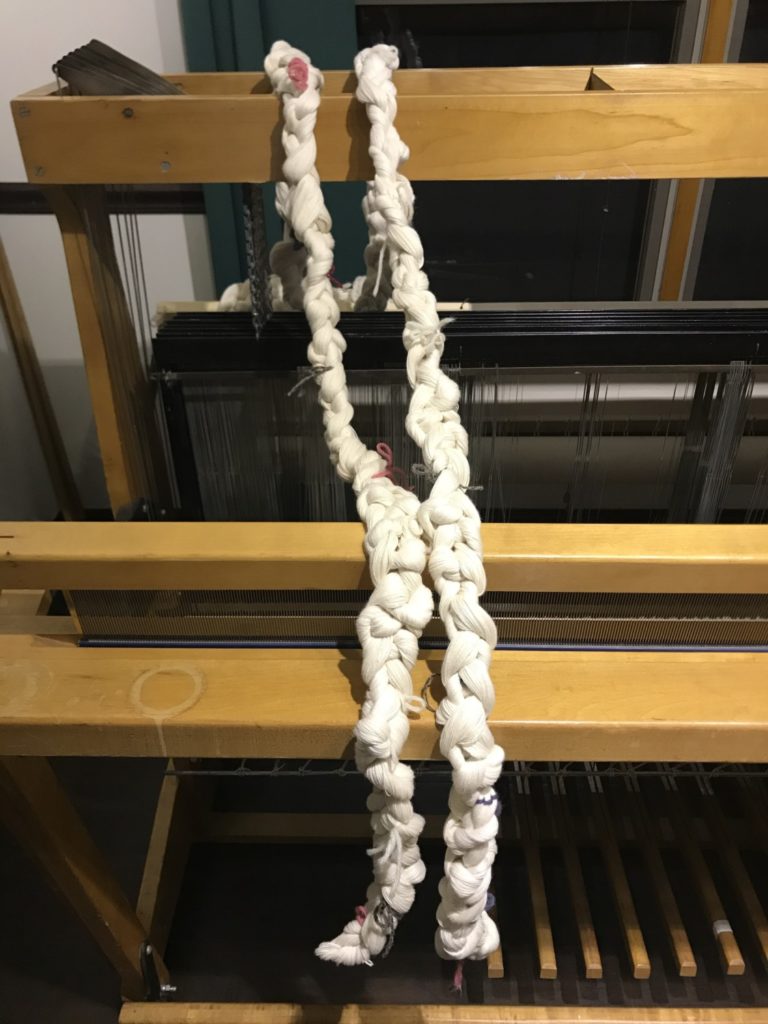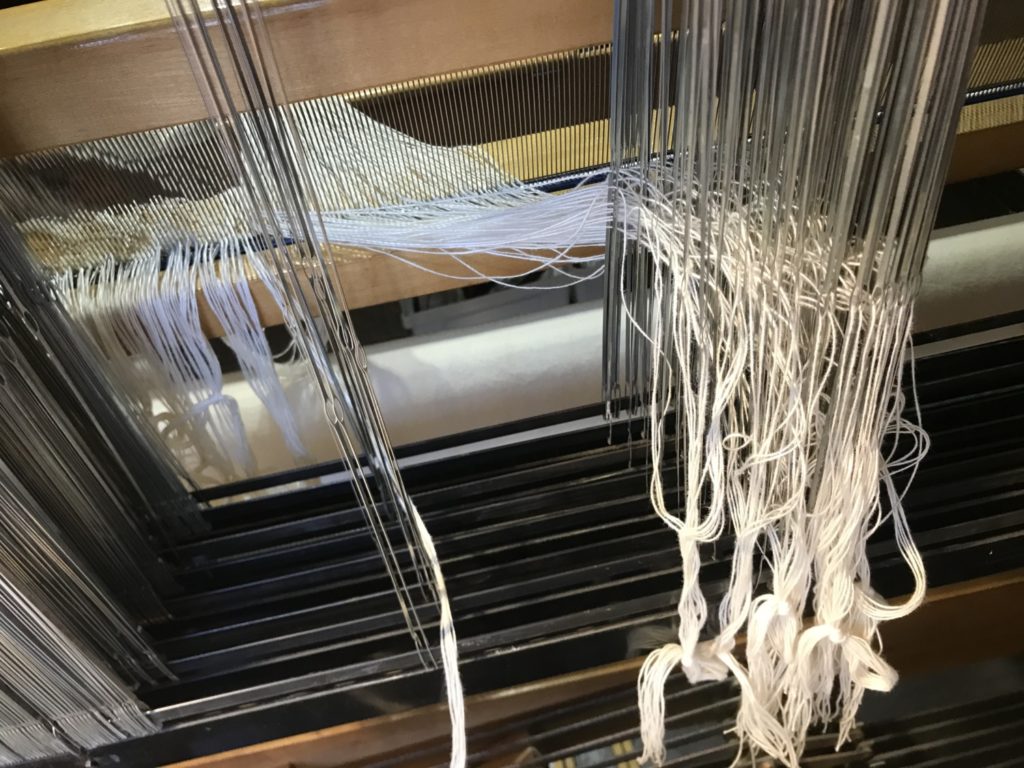I finally got around to warping my big Macomber loom. It had been sitting in the loom room looking intimidating since we brought it home in November. Christmas gifts needed to be finished, so I managed to ignore it until the beginning of January. But, with woven and knitted presents finished, it was time to tackle the big loom.
Over the last few years I’ve had lots of experience warping different looms. You would think this would make it easy to warp a new loom but you would be wrong. The Macomber is so big and complex that I had to work up my nerve to tackle it. I wove on a big loom at Pipe Spring, but it only had two shafts. The Macomber is a similar size to Pipe Spring but it has eight shafts. And I didn’t want to go to the trouble of warping the loom without something that was worthy of using all eight shafts.
 I found a pattern that gives you 13 different towels from one warp and knew I had my project. But, when I worked out the yardage, I didn’t have enough yarn to wind on the warp. The first two weaving shops I tried had the yarn on backorder. Finally, the Yarn Barn in Kansas had the yarn in stock. They shipped it immediately and I got it less than a week later. The Yarn Barn is now my go-to store for all things weaving. Once I got the yarn I wound the yarn on my warping board: 450 strings at 13 yards each.
I found a pattern that gives you 13 different towels from one warp and knew I had my project. But, when I worked out the yardage, I didn’t have enough yarn to wind on the warp. The first two weaving shops I tried had the yarn on backorder. Finally, the Yarn Barn in Kansas had the yarn in stock. They shipped it immediately and I got it less than a week later. The Yarn Barn is now my go-to store for all things weaving. Once I got the yarn I wound the yarn on my warping board: 450 strings at 13 yards each.
Sleying the reed was one of the easiest parts of warping the loom. Because the project is 22 ends per inch, I used a 10 dent (holes per inch) reed and put the strings in 2-2-2-3. It was a challenge to make sure all the strings went in the proper holes. I talked to myself to keep track and it took me two afternoons. I could have done it faster, but my eyes cross after a while and I wanted to stay focused.
Then I had to arrange the heddles on the shafts (are you totally lost yet?). The pattern told me how many heddles I needed on each shaft, so I carefully counted and moved those heddles to the center portion of the loom. Heddles are the things that move the strings up and down in weaving so you can create different patterns.
One repeat of the weaving pattern requires 16 heddles, two on each shaft, and there are 28 repeats. I counted very carefully and took my time doing this. Every sixteen heddles I tied a slipknot to keep the repeats together. This made it easier to double check the pattern. When I threaded all the heddles I had one heddle left over. Oh no! I went back and checked everything for a third time and found one string hanging without being in a heddle. And it was string 219, which meant I had to undo half the strings and do them again. This time everything came out right.
Done? Not even close. Tomorrow I will continue with warping the Macomber loom, part two.

